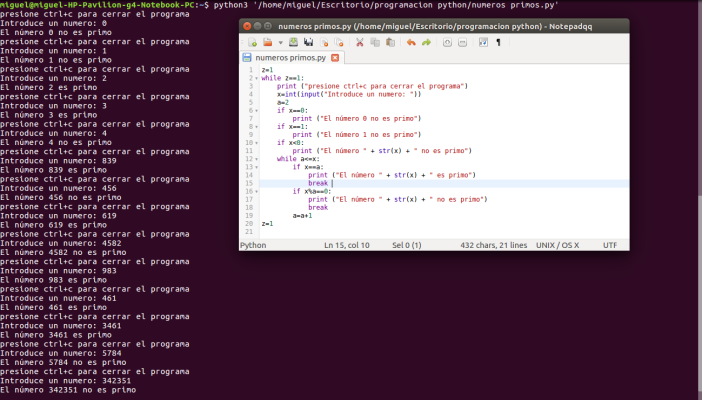--Originally published at Eduardo's Projectz
La herramienta de “while” es una de las más importantes y utilizadas en la mayoría de los lenguajes de programación. Esta permite que se repita un ciclo mientras una condición sea verdadera, y salga de este en cuanto la condición sea falsa.

Para establecer un “while” se necesita escribir la palabra while seguido de la condición que se deseé establecer y, al último, dos puntos.

En este caso, el código establecido para este “while” se correrá siempre y cuando la variable “x” sea menor que 10.
El código designado para un “while” debe de estar abajo de este con cuatro espacios de diferencia respecto a la posición del “while”:

En caso de que “x” sea menor que 10, se le añadirá 1 a el valor de “x”. Esto continuará sucediendo hasta que el valor de “x” ya no sea menor de 10. En caso de que el valor de “x” nunca fuese menor de 10, el código del “while” nunca se ejecutaría.
Aquí un ejemplo de un pequeño programa utilizando “while”:

Este programa te dirá cuantas semanas faltan para que consigas el dinero suficiente para algo.
Aquí un ejemplo de como funciona:

Para más información a cerca de “while” y otros bucles: https://geekytheory.com/bucles-en-python/ https://www.tutorialspoint.com/python/python_while_loop.htm https://docs.python.org/3/tutorial/controlflow.html http://www.mclibre.org/consultar/python/lecciones/python_while.html
Si te es más fácil seguir un video-tutorial: https://youtu.be/D0Nb2Fs3Q8c https://youtu.be/XkDOJC4hpw0







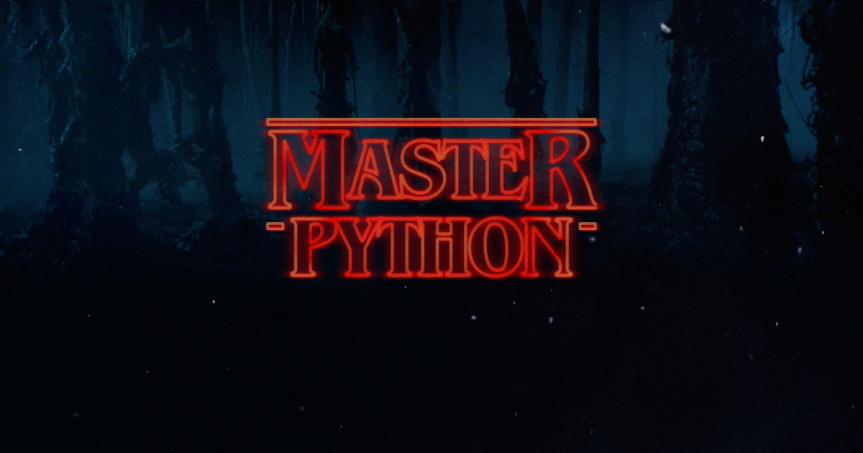

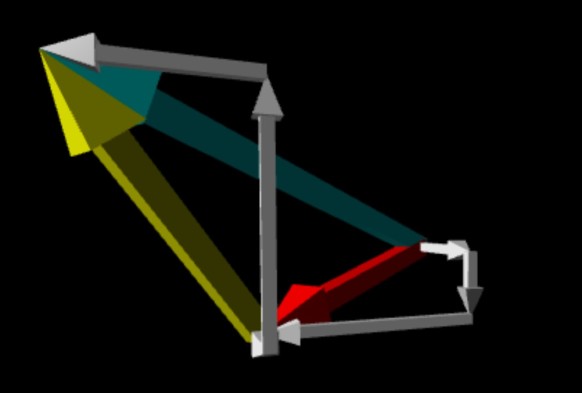
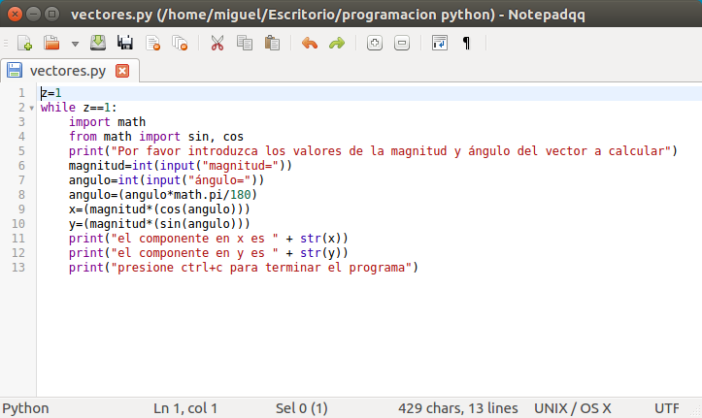




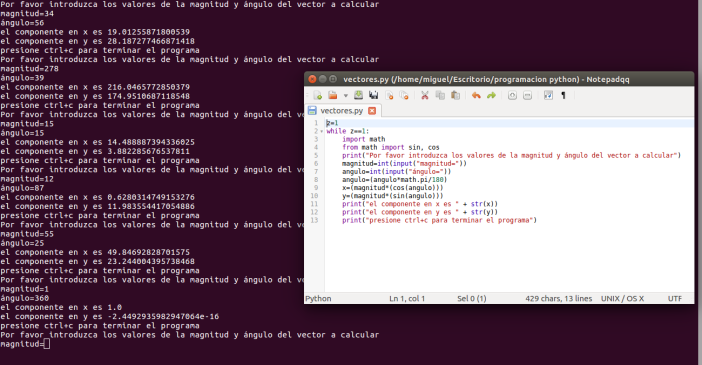
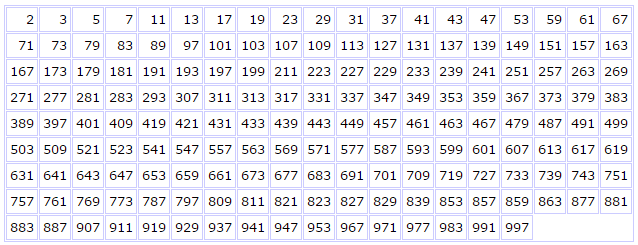
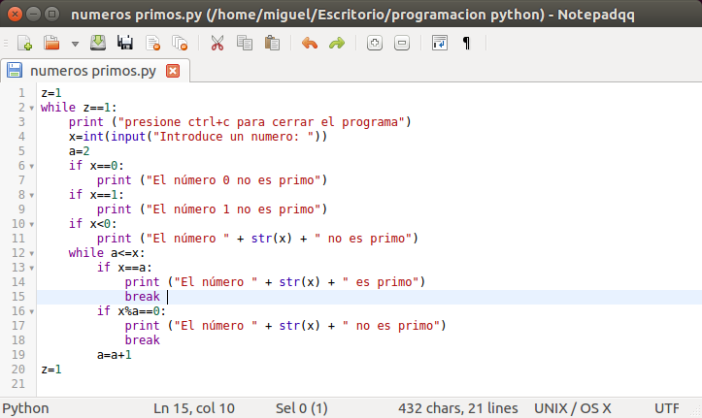
 , is used to make an infinite program until the user press the combination ctrl+c that cancels the infinite loop and closes the program, or you can click on the “X” in your window
, is used to make an infinite program until the user press the combination ctrl+c that cancels the infinite loop and closes the program, or you can click on the “X” in your window  .
. prints the instructions to close the program in the screen for the users that don’t know how to cancel a loop in the terminal.
prints the instructions to close the program in the screen for the users that don’t know how to cancel a loop in the terminal. In the fourth line with the function “input” the user introduce a value with the keyboard and the function “int”, integer, converts the value that the user introduced to an integer value that python can use to do mathematical operations, and the value is saved on the variable named “x”
In the fourth line with the function “input” the user introduce a value with the keyboard and the function “int”, integer, converts the value that the user introduced to an integer value that python can use to do mathematical operations, and the value is saved on the variable named “x” This lines exclude the numbers 0, 1 and the negative numbers from the loop because they are not prime numbers and if they enter to the loop can cause some problems when the program is evaluating the number that we introduced.
This lines exclude the numbers 0, 1 and the negative numbers from the loop because they are not prime numbers and if they enter to the loop can cause some problems when the program is evaluating the number that we introduced. In this final while
In this final while 
